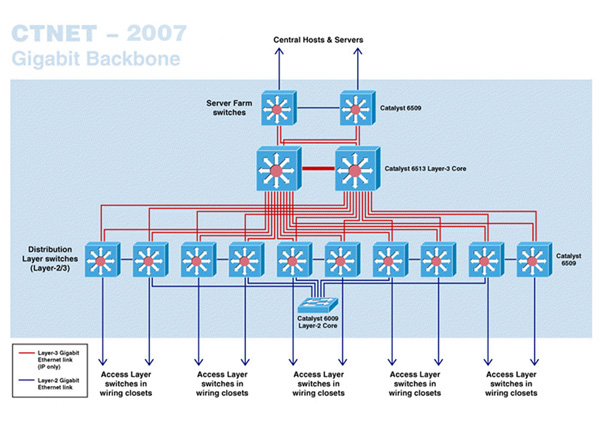The CTNET is built based on a 3-layer architecture, namely the Core Layer, the Distribution Layer and the Access Layer.
The 10G Ethernet Backbone of the CTNET consists of a pair of Layer-3 switches at the Core Layer and several pairs of Layer-2/3 switches at the Distribution Layer. The Layer-3 core switches and the Distribution Layer switches are interconnected using 10G Ethernet links in a mesh topology to provide path redundancy. The OSPF routing protocol is used for pure layer-3 switching by these devices. Each pair of switches at the Distribution Layer also connect to a number of Layer-2 switches (located inside wiring closets) at the Access Layer, forming a Distribution Group. Normally intra-group network traffic will be confined within the same Distribution Group while inter-group and off-campus network traffic will be exchanged at the Layer-3 core switches. For each Distribution Group, redundant links exist between each Access Layer Switch and the Distribution Layer switches, and Bridge Spanning Tree Protocol is used for load balancing the network traffic of various VLANs (Virtual LANs).
